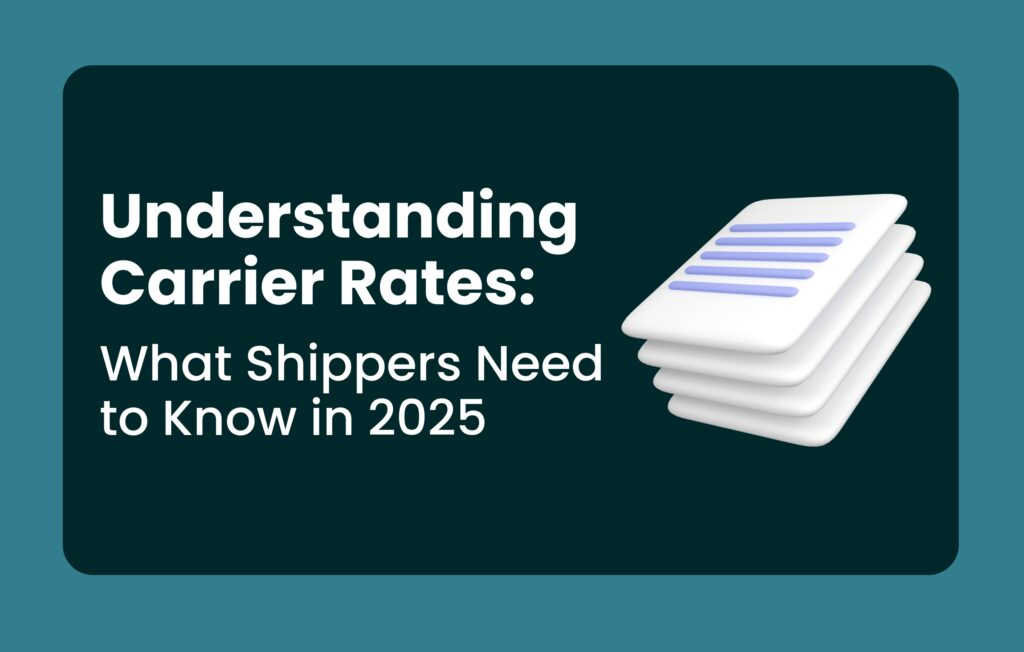The Biden administration recently announced potential changes to Section 321, a key U.S. customs law provision allowing low-value shipments to enter the U.S. duty-free. This move, aimed primarily at curbing abuse of the rule, has caught the attention of brands that rely on cross-border shipping.
While the Section 321 changes are still in the early stages, businesses are closely watching how this will impact their ability to efficiently and affordably ship goods into the U.S. For brands shipping from Canada, the impact may be less severe than initially feared, and Canadian-U.S. cross-border shipping remains a viable solution.
Understanding the Proposed Section 321 Changes
Section 321 allows for duty-free import of low-value goods under $800 into the U.S., benefiting international brands. However, concerns have been raised about potential abuse by international ecommerce sellers.
In response, the Biden administration has proposed tightening Section 321 rules. The important thing to note here is that these rule changes are still in the preliminary phase. The Notice of Proposed Rulemaking (NPRM), which opens for public comment and revisions, is likely to take anywhere from 12 to 18 months to finalize, and possibly longer if there are significant legal or political challenges along the way.
But what does this mean for your brand right now?
The immediate impact may be far less significant for brands and retailers shipping from other regions — especially Canada.
GoBolt CEO’s Take on the Section 321 Changes Announcement
Here’s what GoBolt’s CEO, Mark Ang, has to say about these upcoming changes and what they mean for retailers and brands that are shipping into U.S. markets.
Ang offers a reassuring perspective:

Historically, it’s common for these rule-making processes to face delays due to legal disputes or political pushback. Therefore, while it’s important to stay informed, there’s no need to panic or make alternate shipping arrangements at this point in time.
For brands looking to avoid uncertainty, GoBolt continues to emphasize that shipping from Canada remains a secure and cost-effective option for reaching U.S. shoppers.
The Impact on Retailers Shipping from Canada to the U.S.
The proposed Section 321 changes primarily target shipments originating overseas. For Canadian retailers or international retailers shipping through Canada, this distinction is critical. Shipping from Canada into the U.S. remains a stable and predictable option, as it falls outside the scope of the most significant changes.
What makes Canada such a valuable shipping partner?
- Proximity to U.S. markets: Shipping from Canadian fulfillment centers ensures faster delivery times with lower costs compared to longer international routes.
- Fewer regulatory hurdles: The trade relationship between Canada and the U.S. is well-established, reducing the risk of unexpected tariffs or delays.
- Familiar customs processes: Canadian cross-border shipping regulations are well-defined, and many Canadian brands have successfully navigated these for years, offering a blueprint for others to follow.
Staying Ahead of the Curve: What Brands Should Do Now
While we wait for the finalization of the proposed Section 321 changes, brands should take proactive steps to remain agile and responsive to whatever the final rules may be.
Here’s what brands should be doing now:
- Stay informed: Regularly monitor updates on Section 321 changes, particularly any changes that could affect your shipping routes.
- Diversify shipping strategies: Explore alternatives to traditional supply chains, such as shipping from Canada or leveraging fulfillment centers in North America.
- Partner with logistics experts: GoBolt specializes in cross-border shipping between Canada and the U.S. Our team can help navigate potential regulatory shifts and optimize your fulfillment network to avoid disruptions.
- Compliance processes and procedures: Develop compliance processes and procedures that demonstrate reasonable care in the face of increased CBP enforcement and scrutiny, particularly around supply chain security.
- Supply chain mapping: Conduct a comprehensive end-to-end supply chain mapping to fully understand the extent of products impacted, potential costs, alternative sourcing options and alternative manufacturing options, including relocation of all or a portion of production outside of China with a focus on country-of-origin planning as a means to mitigate impact.
How GoBolt Can Help Brands Adapt to Future Changes
At GoBolt, we understand the complexities of cross-border shipping. Our team is constantly monitoring developments and adjusting our strategies to ensure that our brand partners can continue to ship into the U.S. efficiently.
Here’s how GoBolt can help:
- Cross-border expertise: We have extensive experience handling Canada-to-U.S. shipments, ensuring that your products move seamlessly through customs and reach U.S. shoppers quickly.
- Transparent & timely communication: GoBolt keeps our merchants informed about any potential impacts to your shipping, including any changes to cross-border shipping regulations, helping you stay ahead of the curve.
- Flexible solutions: As rules shift, we provide flexible logistics options that help you navigate the evolving landscape, ensuring that your brand is ready to adapt.
Final Thoughts on the Proposed Section 321 Changes
While the Biden administration’s proposal for Section 321 changes signals potential shifts in cross-border ecommerce, the timeline for implementation is long, and the final impact may be less disruptive than initially anticipated. Brands shipping from Canada remain in a strong position to continue serving U.S. shoppers without significant new barriers.
As GoBolt’s Mark Ang emphasizes, “Shipping from Canada continues to be a viable option, and we’re here to help brands navigate the changes as they unfold.” By staying informed, diversifying shipping strategies, and partnering with experienced logistics providers like GoBolt, your brand can remain competitive and agile.
Stay ahead of regulatory changes — reach out to GoBolt today for expert guidance on your cross-border shipping strategy.








